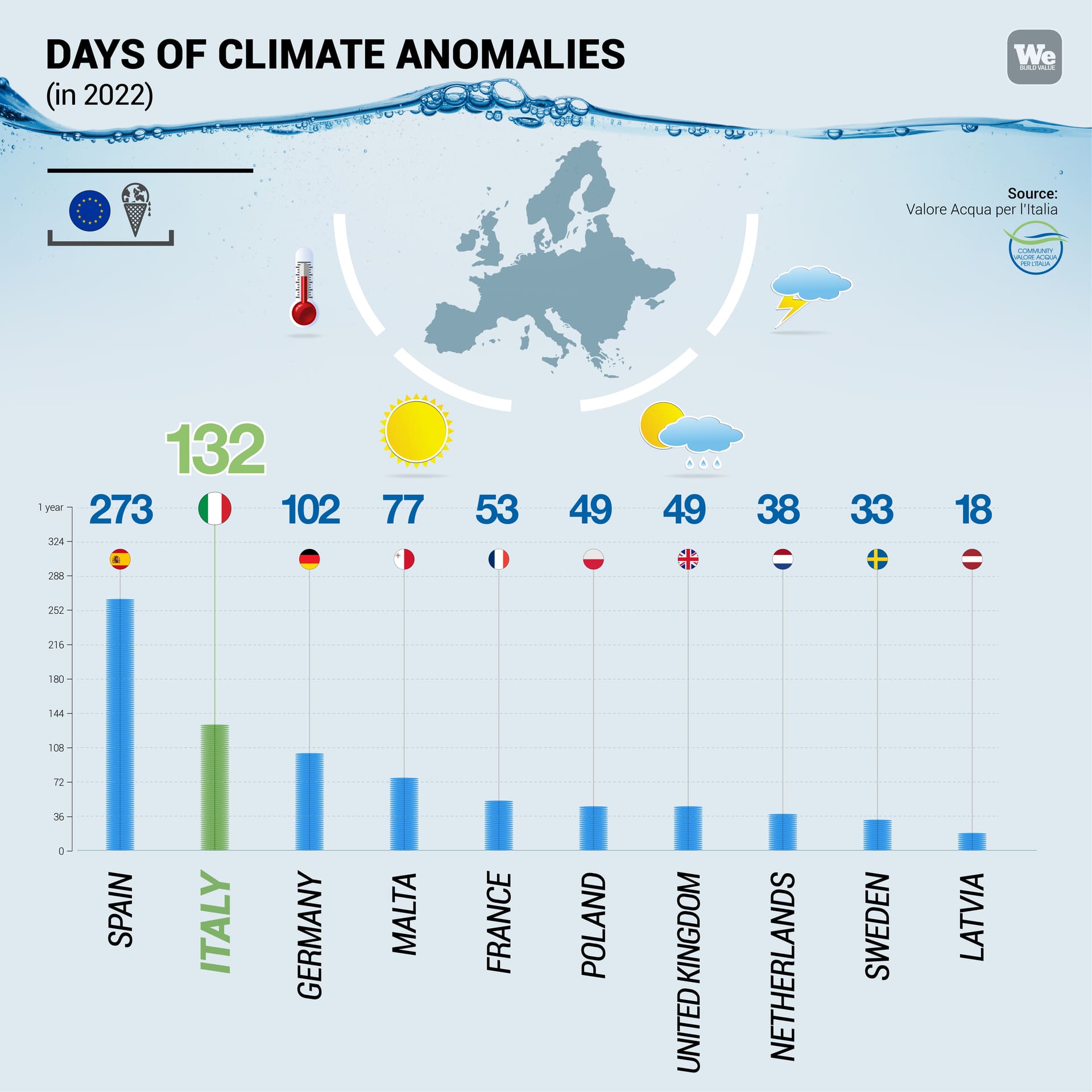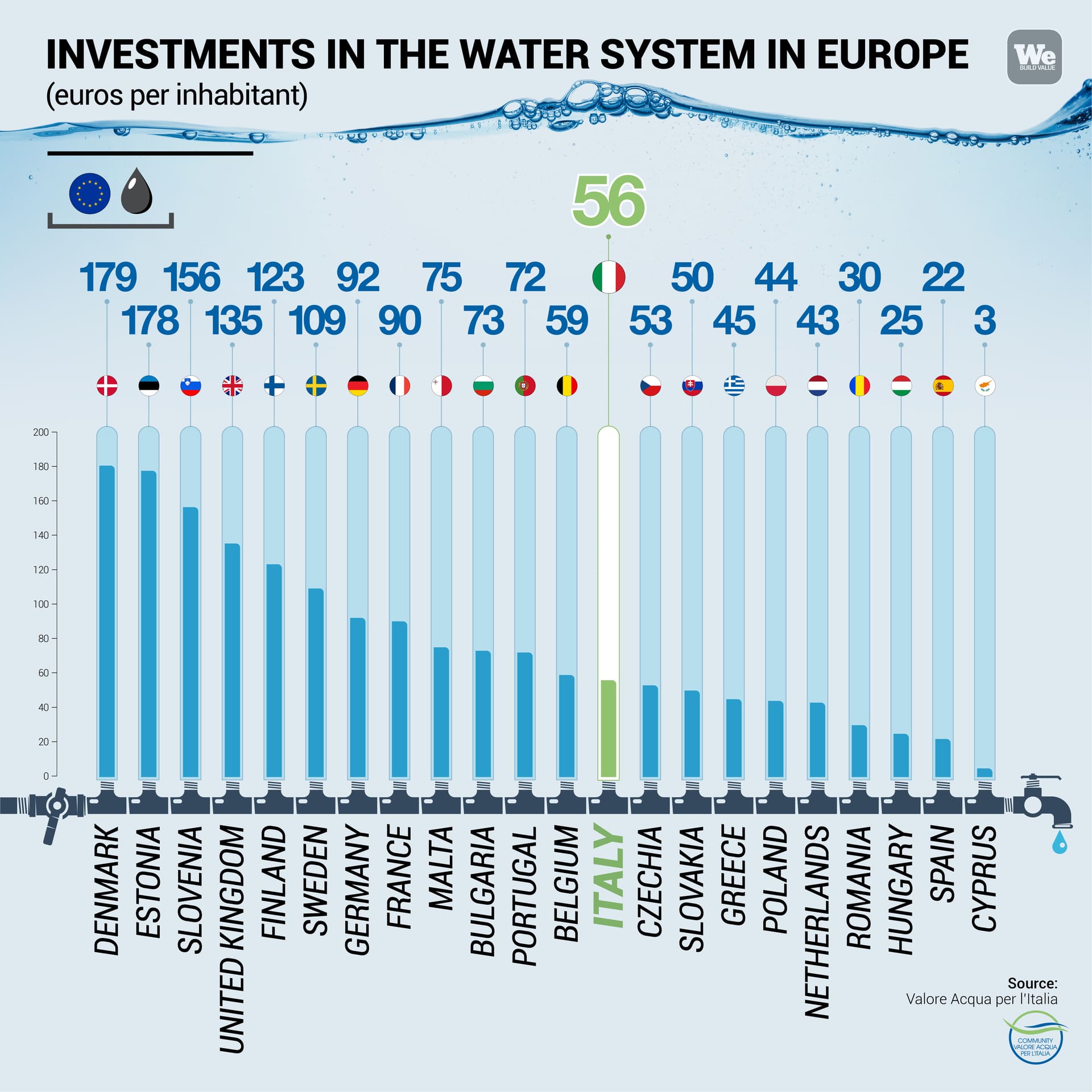A fifth of the wealth produced in Italy is at risk. Some 18% of Italy GDP, or 320 billion euros. The risk is tied to the dramatic evolution of the water emergency, a phenomenon that, from drought to floods, strikes in all seasons and may only be tackled through investments and the modernization of the existing infrastructure.
The think tank The European House – Ambrosetti, sounded the alarm in its 2023 report “The value of water for Italy,” analyzing the value that water represents for the country and the importance of the role played by water infrastructure. Be they waste water plants, essential to manage rivers in cities, or hydroelectric plants that produce clean energy, dams that efficiently manage water flows or pipes that bring drinking water to homes, infrastructures are essential to avoid that atmospheric changes and their effects on water have a devastating impact on the economy.
Water crisis: the risks for the economy and the investments to be done
The hail and violent storms in March have shown the damage that atmospheric changes can wreak on the economy, starting with the agricultural sector. Similarly, prolonged drought can threaten crops by reducing drastically the amount of available water.
In Italy water is a fundamental resource for 1.5 million agricultural businesses, in addition to 330.000 manufacturing companies that consume a lot of water for their processes. In 2021 the extended water cycle, that is the industry connected to this resource, generated 9.4 billon euros in value added, as much as the pharmaceutical industry and twice as much as the clothing sector. This confirms the importance that investments have in the preservation of such a strategic sector for the Italian economy. Investments such as those in desalination technology, which makes it possible to create drinking water from the sea, a technology in which Fisia Italimpianti of the Webuild Group is leader, which has come to supply four million cubic metres a day of treated water for more than 20 million people.
Italy, all the infrastructure must be rebuilt
Protecting water and with it protecting the economic and social wellbeing of the population is possible only by investing more in water infrastructures and their transition to smart and digital solutions. That is the conclusion reached by Ambrosetti after analyzing the data that highlight this broad crisis. They found that 25% of Italy’s water networks is more than 25 years old and the substitution rate is just 3.8 meters per kilometer per year. At this rate it will take 250 years for a complete overhaul.
In addition to the physical infrastructure and its age, there is also the issue of modernizing the water management tools. Half of the water meters in Italian homes are more than 20 years old. Smart meters represent only 4% of the total, 12 times less than the European average. According to the report, if all homes were supplied with smart meters, 2.4 billion euros could be saved each year, reducing by 513,3 million cubic meters water demand (about 10% of annual water consumption).
“The state of Italy’s water infrastructure, along with the ever increasing pressures on water resources, made dramatic by climate change, impose on us a paradigm shift: switching to a circular management of water,” said Valerio De Molli, Managing Partner and CEO of The European House – Ambrosetti.
Waste water, the lack of reuse
Managing water circularly means first of all to reuse it, especially waste water and that collected after heavy rain storms and from city discharges. Large cities like Buenos Aires and Washington D.C. are an example. The Webuild group realized innovative plants to treat and reuse the waste waters of large rivers, such as the Riachuelo in the Argentinian capital and the Potomac in the US capital.
In Italy much remains to be done about reusing waste water. Currently Italy recovers barely 11% of rain water, while 1.3 million citizens, mostly in the south, do not have access to waste water treatment. Overall, only 4% of waste water is destined to be reused directly, when the potential is 23%. Too little, especially if one considers that Italians consume more water than all the other European Union members. With a total of 9 billion cubic meters a year, Italy leads the EU in water used for civilian purposes, reaching an average of 220 liters a day per inhabitant.
Investments are therefore necessary. The European Commission and the OCSE have estimated that by 2030 the continent will need to invest 300 billion euros, the only way to make infrastructures efficient and truly protect such a precious resource.



